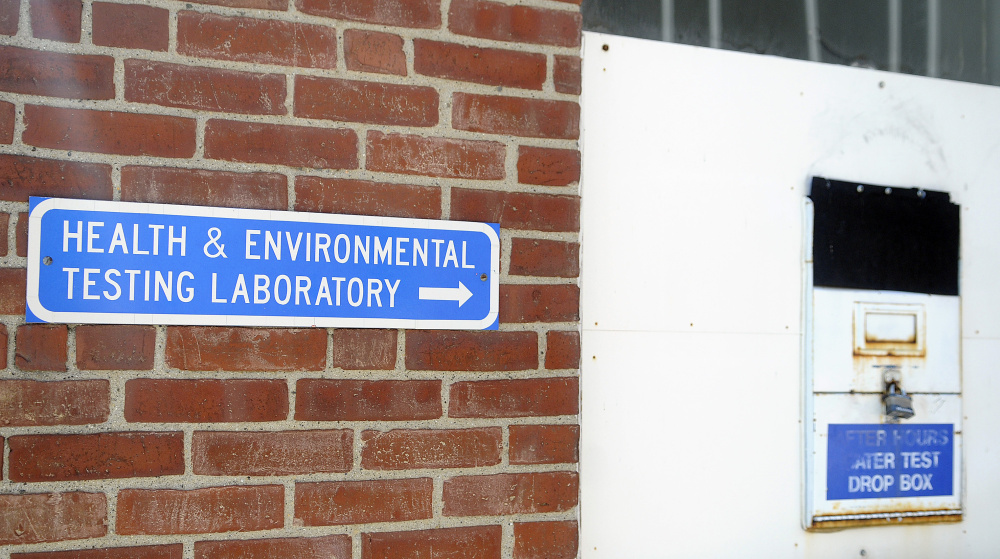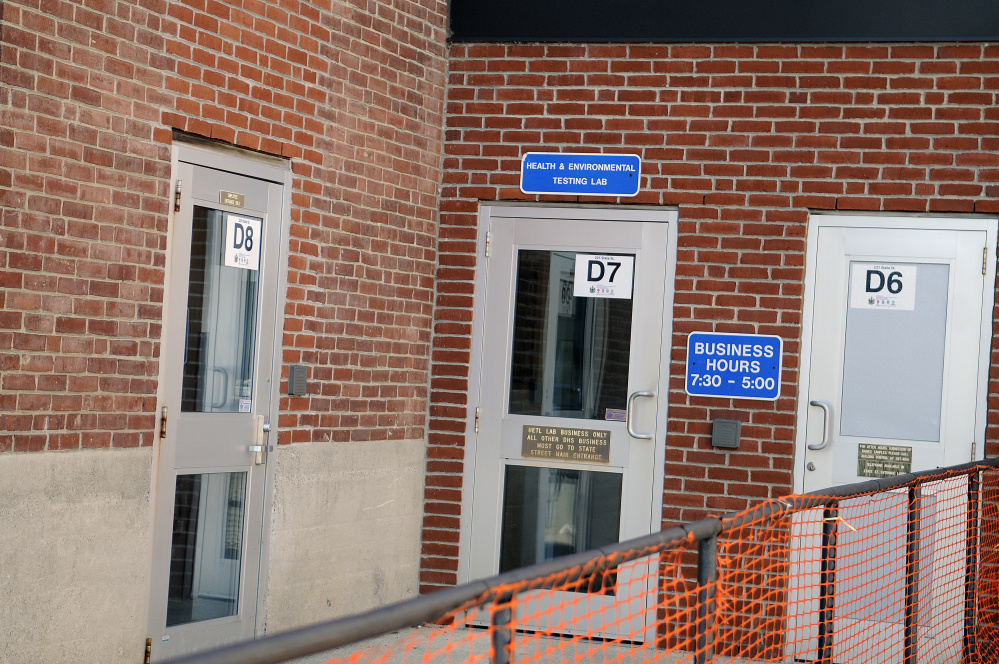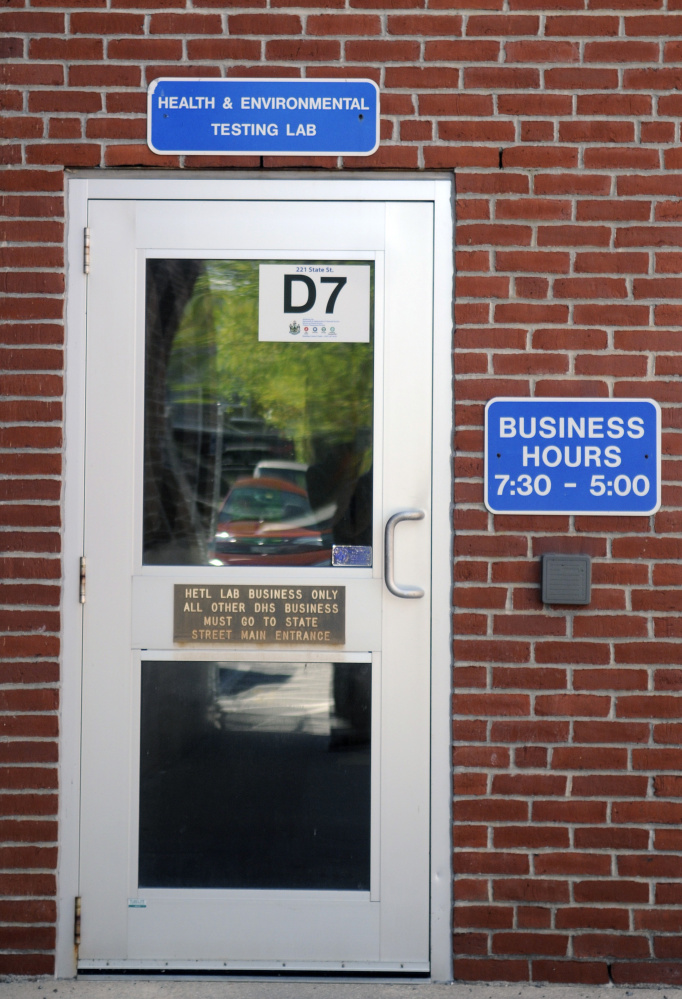AUGUSTA — Federal officials found three regulatory violations with “major” potential for harm to people and the environment during a 2013 inspection of an Augusta lab, including hazardous waste violations that a Portland lawyer called “presumptively serious.”
The inspection of the Maine Health and Environmental Testing Laboratory also found eight violations with “moderate” risk. As a result, the Maine Department of Health and Human Services agreed to pay $100,000 in fines and equipment purchases to settle the claims that it violated state and federal hazardous waste laws. Some of the money will pay for equipment for emergency responders in Augusta and Waterville and the state Department of Environmental Protection.
The equipment includes $25,000 worth of self-contained breathing apparatus bottles, $15,000 for propane heating systems and $9,000 for bulky equipment storage.
A copy of an amended complaint obtained by the Kennebec Journal shows the federal EPA initially sought $193,361 in penalties for the 11 violations, which it identified after an inspection Aug. 7-8, 2013, as well as compliance. The dollar figure was later almost halved during settlement negotiations.
“Hazardous waste violations are presumptively serious,” said Kenneth Gray, a Portland attorney with Pierce Atwood who specializes in hazardous substance and hazardous waste management law and who formerly practiced with the EPA. “And then what you have to do is determine which are really paperwork and which really pose a threat to employees or the environment.”
Gray said many of the violations cited in the EPA’s amended complaint look like paperwork problems. “Higher penalties are assigned to the most serious violations,” he said.
In the state lab’s case, that appears to be the three violations with “major” potential for harm that initially carried penalties of between $32,000 and $46,000.
The major violations were unlicensed treatment of hazardous waste, failure to conduct adequate waste determinations and failure to segregate incompatible wastes.
In describing the potential of failing to properly identify hazardous wastes, the Environmental Protection Agency said, “Such wastes could be stored in uncontrolled areas where emergency responders and facility personnel might not recognize associated hazards.”
The state lab, which performs about 140,000 tests per year on human specimens, food, water, wastewater and hazardous materials, was inspected by the EPA for compliance with the Solid Waste Disposal Act and Resource Conservation and Recovery Act.
“Routine federal compliance checks in 2013 resulted in some infractions, the nature and scope of which were the subject of disagreement leading to the described settlement,” according to an email from John Martins, public health information officer and director of internal and program communications for DHHS, which operates the lab.
“As noted, the concerns raised as part of the inspection were dealt with thoroughly and appropriately,” Martins said. “The state Health Lab is a complex operation that undergoes continuous quality improvement to ensure efficiency and safety.”
Following the complaint, the state laboratory reviewed and complied with practices and procedures, the EPA news release said. It was unclear whether the lab had been previously cited for violations.
The complaint, which was signed by Joanna Jerison, legal enforcement manager in the EPA’s Region 1 office, said the Maine lab analyzes “human specimens, food, water, wastewater and hazardous materials to support federal and state regulatory programs, health care providers, public health protection and the general public.”
As such, it generates hazardous wastes, including those containing sulfuric, nitric, hydrochloric and phosphoric acids, as well as mercury, acetone, methylene chloride and hexane. The hazardous waste is kept in storage areas in different rooms and labs.
Much of it is disposed of by being neutralized and then dumped into a sink drain that connects through the sewer to the Greater Augusta Utility District’s nearby treatment plant.
According to the EPA, the state Health and Environmental Testing Laboratory “manages approximately 8,190 liters of hazardous waste through neutralization on an annual basis. It also handles 2,500 liters of inorganic metals waste per year.”
Send questions/comments to the editors.






Success. Please wait for the page to reload. If the page does not reload within 5 seconds, please refresh the page.
Enter your email and password to access comments.
Hi, to comment on stories you must . This profile is in addition to your subscription and website login.
Already have a commenting profile? .
Invalid username/password.
Please check your email to confirm and complete your registration.
Only subscribers are eligible to post comments. Please subscribe or login first for digital access. Here’s why.
Use the form below to reset your password. When you've submitted your account email, we will send an email with a reset code.